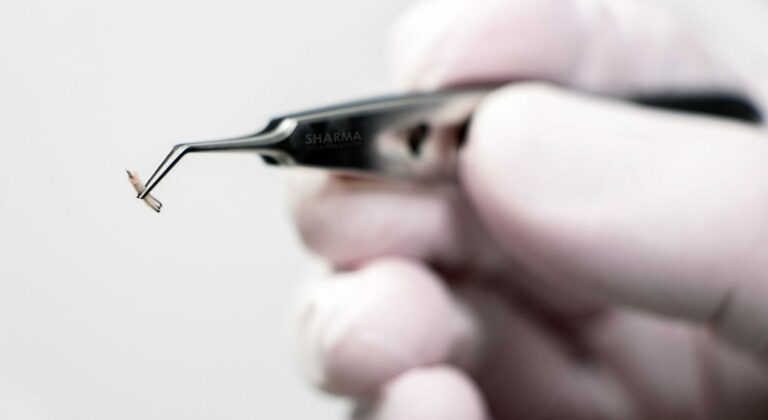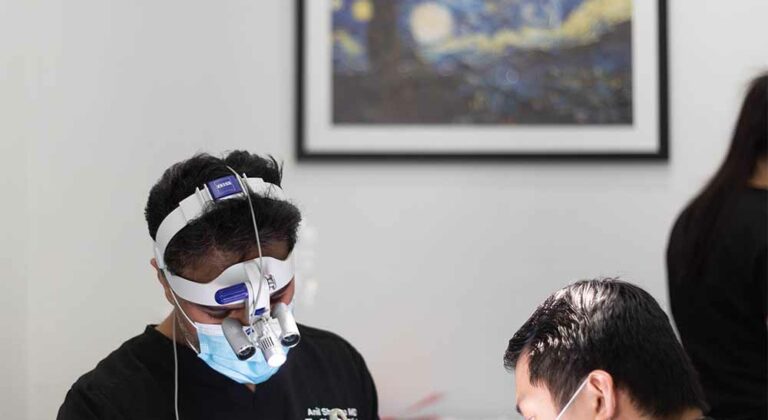Undergoing a hair transplant is a significant step towards restoring confidence and self-esteem. However, the recovery process can present challenges, particularly when it comes to concealing the initial signs of healing. This article offers practical tips on how to discreetly manage your appearance during the post-transplant period, ensuring a smooth transition back to your everyday life.
Pre-transplant preparation
Before your transplant, these steps can help you feel prepared and empowered during your healing journey.
Consultation with your surgeon
Before your surgery, discuss your recovery needs with your surgeon during the initial consultation. If you require a low-profile healing period, consider scheduling your procedure during a vacation or when you’re working remotely. This can help minimize public exposure during the initial stages of recovery.
Find out about our consultations hereHairstyle adjustments
Consider a gradual haircut beforehand. By progressively shortening your existing hair in the weeks leading up to the procedure, you can create a smoother transition between your transplanted and natural locks. Layered styles or longer tops can also help to blend the two seamlessly.
Immediate post-surgery concealment
Here are some tips for concealing your transplant with headgear and accessories:
Choosing the right headgear
Opt for hats or caps that are loose-fitting and allow for ample air circulation. This will prevent discomfort and irritation, especially during the early stages of healing. Tight-fitting headgear can put pressure on the grafts and potentially disrupt the healing process.
Stick to styles that are comfortable and don’t restrict movement. Fabrics like cotton, linen, or mesh are excellent choices as they allow for proper ventilation, preventing excessive heat and moisture buildup.
How to choose headwear after hair transplant surgeryUtilizing surgical bandages
Surgical bandages are designed to cover the treatment area and disguise any redness or swelling. Follow your surgeon’s instructions for placement and duration. Bandages help to protect the delicate grafts from external factors that could interfere with healing.
Managing swelling and redness
Swelling and redness after a hair transplant are a natural part of the healing process. Elevating your head while you sleep can help to reduce swelling and discomfort. Applying cold compresses to the treatment area can also help alleviate swelling and pain. Ensure you follow your surgeon’s instructions for application and frequency.
Concealment techniques during early healing
Here are some effective strategies to minimize the visibility of your transplant during the initial healing phase.
Camouflaging products
- Concealers: A well-matched concealer can effectively mask any redness or discoloration associated with the healing process. Apply it directly to the transplanted area and blend carefully.
- Hair fibers: These tiny, electrostatic fibers adhere to your existing hair, creating a denser appearance and disguising thinning areas. Choose a color that closely matches your natural hair shade.
Always follow your surgeon’s advice regarding when it’s safe to start using camouflaging products. They can provide specific guidance based on your individual healing progress.
Hairstyling
- Strategic styles: Opt for hairstyles that provide natural coverage during the early stages of healing. Longer top or side-swept styles can effectively camouflage the transplanted area.
- Volume and texture: Enhance your hair’s overall appearance by using volumizing products and techniques. This can help minimize the visibility of surgical marks or scars.
- Avoid tight hairstyles: During the healing process, it’s important to avoid hairstyles that pull or tug on the transplanted hair. This can interfere with the healing process and potentially damage the grafts.
Lifestyle adjustments for discreet recovery
There are some adjustments you can make to promote a discreet recovery process:
Social interaction strategies
To optimize your recovery, consider minimizing social activities in the immediate weeks following your surgery. This allows your body to focus on healing without the added stress of social obligations.
Communicate openly with your loved ones about your recent procedure. Sharing your experience can provide emotional support and help manage expectations from others. Remember, it’s okay to decline invitations or limit social interactions during this time.
By prioritizing rest and relaxation, you’re setting yourself up for a smoother recovery and a quicker return to normal activities.
Work arrangements
Be honest with your employer about your recovery needs and create a rehabilitation schedule that works for both of you. Request any necessary accommodations, such as flexible hours or reduced workload, to support your healing process.
When possible, work remotely to reduce the need for commuting and allow for more flexibility in your schedule. If your condition warrants it, take time off work to focus on your recovery and avoid unnecessary strain.
If you are working remotely but are required to join meetings virtually, ensure that your camera angle and lighting are flattering, minimizing the visibility of the transplant site. If you prefer to keep your transplant private, consider using virtual backgrounds or adjusting your camera angle accordingly.
By implementing these strategies, you can create a supportive environment that promotes healing and helps you navigate the challenges of post-transplant recovery.
BOOK NOW
Talk to a Hair Transplant Expert
Are you looking for the most effective treatment plan to reverse the effects of hair loss? Dr. Sharma has a long-lasting commitment to offering the best services in the industry. Not only is he experienced with hair loss treatment, but he is passionate about helping each patient receive excellent results.

Share this:
Medically reviewed by
Updated on
Have a question?
Find out how we can help you look feel your absolute best
Contact us 780-476-7970


